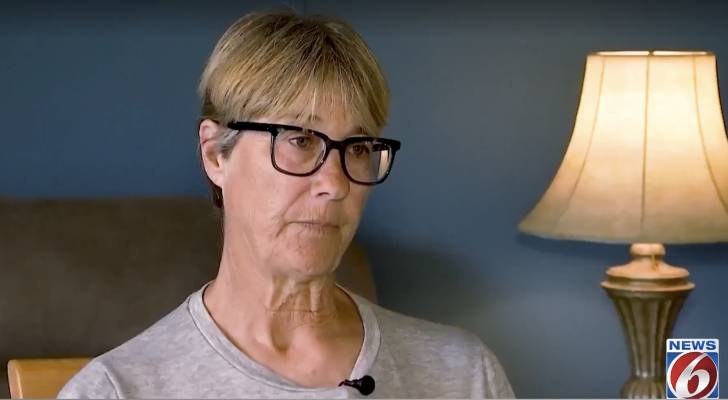McDonald’s has shuttered 6 locations around Chicago’s iconic Loop neighborhood — despite signs of an economic rebound in the area. Why the fast food giant may be pulling back on its presence

Those looking for a quick bite of McDonald’s in the heart of downtown Chicago might have to look elsewhere. Six locations in close proximity within and around the city’s iconic downtown neighborhood — the Loop — have closed recently, according to CBS News Chicago. Now, there are only four left in the central business district. […]
Kristi Noem got her bag, $3,000 stolen by masked thief from a DC restaurant despite Secret Service presence — here’s how the robbery went down and how to prevent a similar hit

You can’t track cash — so if someone takes it, you’re out of luck. The Department of Homeland Security (DHS) confirmed that on Sunday, April 20, Homeland Security Secretary Kristi Noem’s purse was stolen. Don’t miss I’m 49 years old and have nothing saved for retirement — what should I do? Don’t panic. Here are […]
‘I have no money now’: This retiree sunk nearly her ‘entire life savings’ into a half-built house in Florida that her bankrupt builder won’t finish — and she’s not alone
Some homebuyers in Citrus Springs, Florida, are in shock after the Van Der Valk Construction company filed for Chapter 11 bankruptcy in April, leaving many homes unfinished. The Citrus County-based company is leaving many homeowners, mostly retirees, holding the bag financially. Don’t miss I’m 49 years old and have nothing saved for retirement — what […]
Extreme weather takes growing toll on commercial insurance sector

Canada faced one of its most expensive years for insured losses in 2024, with severe weather wreaking havoc on both homes and businesses. While homeowners bore the brunt of the damage, commercial properties also suffered massive losses, pushing the total insured damages to over $1.7 billion — the second-highest in the country’s history. "Thousands of […]
Canadians not looking ahead in 2025 with rose-coloured glasses

Many Canadians are looking at their financial well-being in 2025 with at least some level of concern. A new H&R Block survey reveals 64% of Canadians are concerned that 2025 is going to be a challenging year for them financially. "Many Canadians are feeling the pinch of higher costs-of-living and are looking to manage spending […]
BC man’s home assessed at $2 over landslide risk — What this means for at-risk homeowners across Canada

After heavy rainfall in 2021, Chris Rampersad’s property on Chilliwack Lake Road narrowly missed massive damage, as a landslide halted about five metres before his home according to the Vancouver Sun. Rampersad felt lucky at the time but little did he know that his property problems were just beginning. In 2024, Rampersad was advised the […]
Grocery giant Loblaws drops property restrictions, paving way for lower grocery prices and reshaping investor outlook

In a move hailed as a win for consumer choice and market fairness, Loblaw Companies Ltd. (TSX:L) has announced it will eliminate restrictive property controls that have limited grocery competition in Canada. The Competition Bureau welcomed the decision, calling it a “key milestone” that could help drive down food prices by allowing more retailers to […]
$10,000 question: How much are you willing to risk lending to family when the odds of payback keep shrinking?

A few years ago, your brother borrowed money to help pay for groceries for several months, and paid you back. But now, he finds himself short of cash again and you’re not sure whether you want to lend her more money. Wanting to help out a friend or family member when they’re in a financial […]
This 55-plus community in Florida saw rents skyrocket nearly 100% — leaving them with no choice but to move. Here’s what to do if your living costs explode while on a fixed income

Jodi Heger is a resident of Spanish Village and leases the land beneath her mobile home — a common occurrence for many of those living in mobile home lots. The rent was affordable on her income, but now she may be forced to leave the mobile home community for those aged 55 and over. As […]
Is housing really an investment? Canadians weigh in

For generations, Canadian homeownership has been considered a rite of passage and a cornerstone of financial security. But as the real estate market cools and borrowing costs remain stubbornly high, a growing number of Canadians are starting to question the logic. Is housing really an investment or just an expensive place to live? That question […]